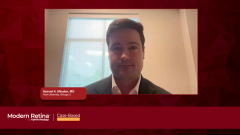
Geographic Atrophy in AMD and nAMD Patients: Real-World Management Challenges and Strategies
A panelist discusses how integrating clinical trial data with real-world experience, patient-centered care, and shared decision-making enables retina specialists to individualize treatment plans, optimize adherence, and preserve vision in patients with geographic atrophy and neovascular AMD.
The discussion emphasized the importance of integrating real-world experience with clinical trial data when treating patients with geographic atrophy and neovascular AMD. The panelist highlighted the need to balance evidence from clinical trials with practical considerations in daily practice, including patient preferences, lifestyle, and adherence. Case-based discussions illustrated how treatment plans must be flexible and individualized, with attention to patient goals, frequency of visits, and potential treatment burden. Real-world evidence offers insights into how therapies perform outside of controlled trial settings, including adherence rates, patient satisfaction, and practical challenges, which are critical for optimizing outcomes.
A significant theme was patient empowerment and shared decision-making. Patients often have distinct expectations regarding therapy, including understanding risks, benefits, and how treatment fits into their lives. Effective communication and education allow patients to make informed choices, fostering therapeutic partnerships that improve adherence and satisfaction. In cases where patients face a progressive decline in vision, the approach highlighted the value of proactive treatment rather than accepting vision loss as inevitable. Encouraging patients to “fight” the disease by engaging in therapy, even when prognosis is challenging, helps preserve vision and enhances quality of life.
Finally, the discussion underscored the importance of adapting practice to incorporate emerging therapies. The panelist stressed that staying current with new treatments ensures patients benefit from innovations while avoiding being either the first or last to implement new strategies. Hearing how peers in community and private practices utilize therapies provided valuable context for trainees, who often have limited exposure to these scenarios during fellowship. By combining evidence-based medicine, real-world data, and patient-centered care, clinicians can optimize treatment strategies, maintain visual function, and personalize care for patients with complex retinal conditions. The overarching message was clear: understanding both the science and the patient perspective is key to successful management.
Newsletter
Keep your retina practice on the forefront—subscribe for expert analysis and emerging trends in retinal disease management.








































